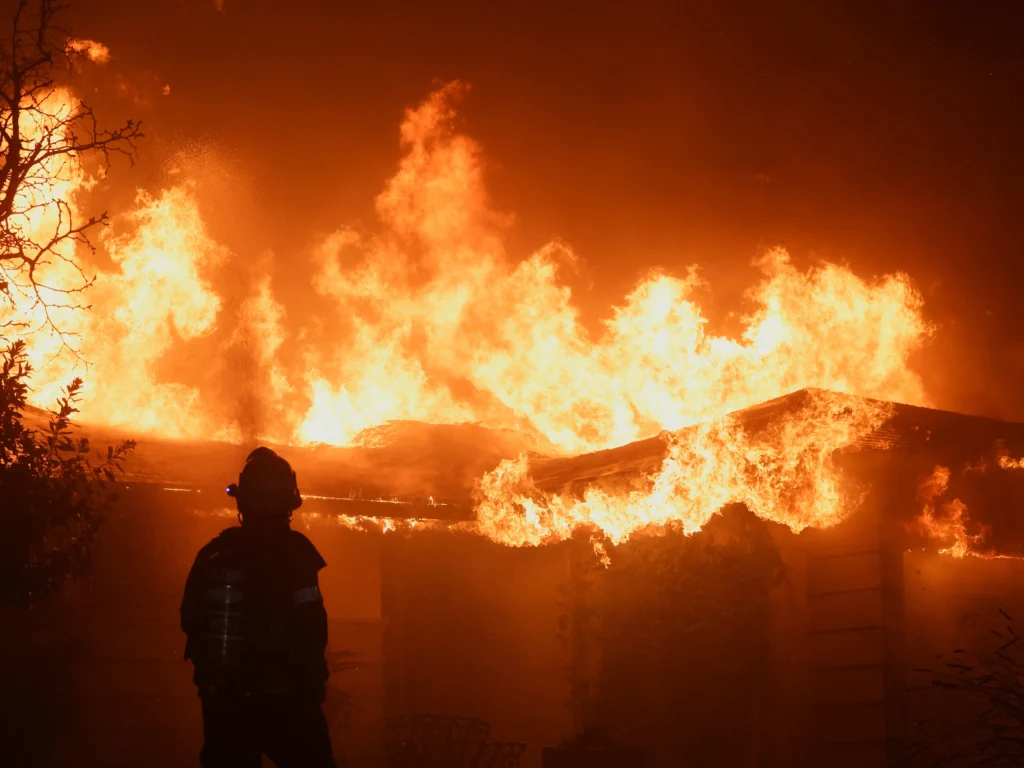When a wildfire or natural disaster occurs, it can be a confusing and frightening time for kids. As parents and caregivers, we play a critical role in helping them understand and process these events. While there’s no perfect way to navigate these conversations, these tips, drawn from the American Academy of Child and Adolescent Psychiatry, can help you support the children in your life:
1. Create a Safe Space for Questions
Let kids know it’s okay to ask questions and share their thoughts. However, don’t push them to talk until they’re ready. By fostering an open and supportive environment, you’ll encourage them to express themselves when they feel comfortable.
2. Be Honest and Clear
Provide truthful answers and information. Kids can sense when something is being hidden, which might affect their ability to trust you in the future. Use age-appropriate language and concepts they can understand.
3. Repeat as Needed
Kids may need to hear explanations multiple times to fully grasp the situation. Repetition helps reassure them and gives them the opportunity to process what’s happening.
4. Validate Their Feelings
Acknowledge and validate their emotions and thoughts. Let them know it’s normal to feel worried, sad, or confused. Reassuring them that their feelings are important helps build trust and emotional security.
5. Address Personal Safety
Kids often personalize events, worrying about their safety or that of loved ones. Offer realistic reassurances, like reminding them they are safe in your care, but avoid making promises you can’t guarantee, such as saying there will never be another disaster.
6. Offer Creative Outlets
Not all kids will want to talk. Provide alternative ways for them to express their feelings, such as drawing, playing, or writing. These activities can be therapeutic and help them process emotions in a nonverbal way.
7. Highlight the Helpers
Share stories about the people working to help affected communities. This can provide a sense of hope and demonstrate the kindness and resilience of others during challenging times.
8. Be a Role Model
Kids look to adults for cues on how to react. Stay calm and mindful of how you respond to the event. They’ll also pick up on your conversations with others, so try to model a balanced and reassuring tone.
9. Limit Exposure to Scary Images
Avoid letting kids watch repeated or graphic coverage of disasters on TV or online. These images can intensify fear and confusion, especially for younger kids.
10. Monitor Physical Symptoms
Kids often express anxiety physically, such as through headaches or stomachaches. Pay attention to these signs, as they could indicate underlying stress or worry.
11. Provide Extra Support for Vulnerable Kids
Kids who have experienced trauma or loss in the past may be more affected by news of disasters. They may require additional comfort, attention, and reassurance to help them cope.
12. Know When to Seek Help
If a kid seems overly preoccupied with fears about disasters or shows ongoing signs of distress, such as sleep disturbances or recurring fears about death, consult a pediatrician, counselor, or mental health professional. Early intervention can help prevent long-term emotional challenges.
Resilience Starts with Support
Wildfires and natural disasters are difficult for anyone to comprehend, especially kids. By being honest, patient, and supportive, we can help them process these events and build resilience. Most children, even those exposed to trauma, are remarkably adaptable. With your guidance, they can navigate their emotions and emerge stronger and more confident.
Let’s be the steady, caring presence they need during uncertain times.



